Basic Use of Pillows to Reduce Spine Pain
Sleep is one of the most elemental needs of the human body.
Good sleep refreshes and rejuvenates the body and mind, while bad sleep can make for a miserable morning, especially when waking up with neck and back pain.
The most common cause of morning neck and back pain is your pillow.
A good pillow should conform to the shape of your body, giving support without applying pressure, while ensuring that weight is spread evenly along the vertebrae of the spine. The following information will discuss what to look for in pillows and the correct way to sleep on your pillow to reduce possible onset of morning neck and back pain.
Before we get started, think about your sleeping position – whether you sleep on your back, the right/left side, or stomach. Proper pillow placement varies for different sleeping positions.
PILLOW PLACEMENT FOR GOOD SLEEP:
When properly aligned, the spine possesses a natural “S” curve when viewed from the side, which pillows should support during sleep.
If your spine is not supported, the misalignment will cause muscles and connective tissue to cramp and become sore leading to waking up with aches and pain during the night or the following morning.
The goal of using a pillow is to help keep your head and spine in neutral alignment – meaning that your head is sitting in “mid-line” position between your shoulders, where both the head and neck are straight.
If You Sleep On Your Back…
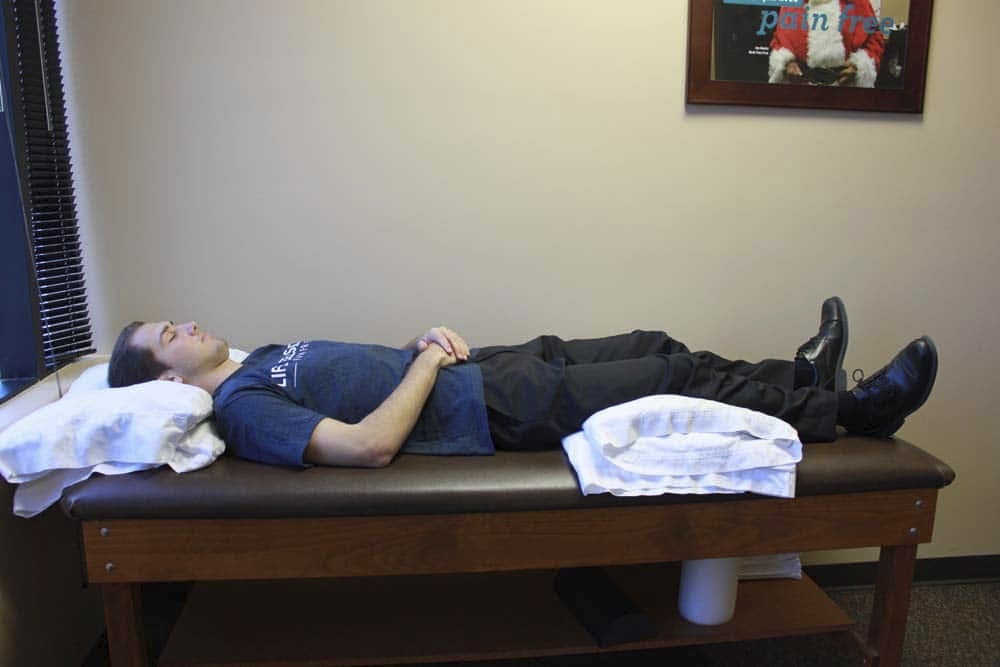
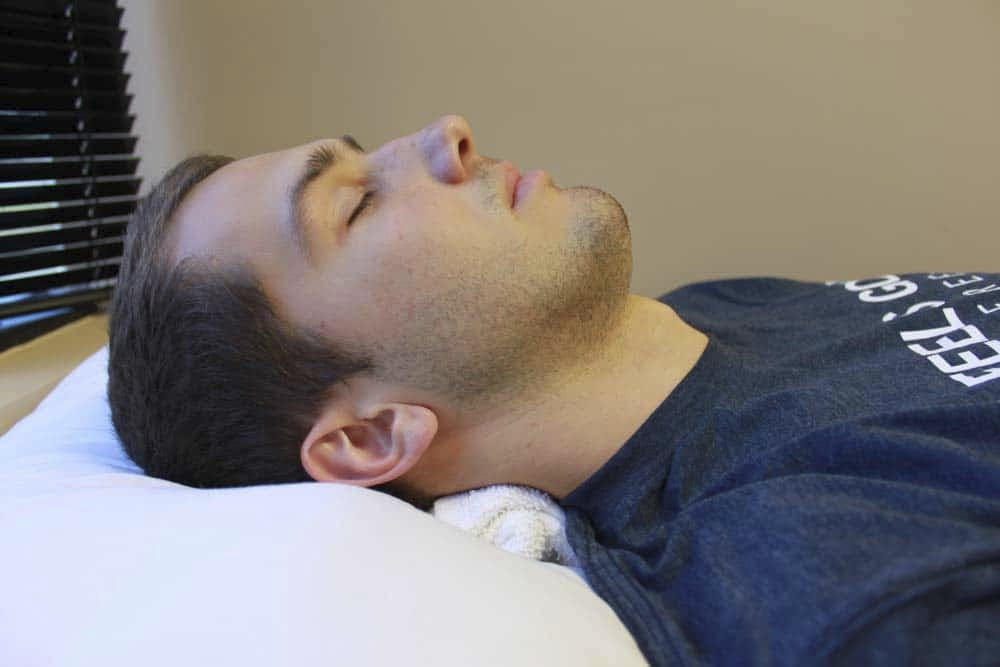
Your pillow should support the neck, head, and shoulders, keeping the curvature of the spine in a natural position.
If the pillow is too thin, your head will tilt backwards increasing the spinal curve, which can lead to pain and discomfort. On the other hand, if the pillow is too thick or multiple pillows are stacked the head will be in a forward flexed position, tilting the chin and putting stain on the neck.
Any existing neck problems may be amplified if the neck is not supported when laying on your back. Sometimes using a medium pillow with a rolled towel under the neck will provide the needed support – or finding a pillow with an extra loft in the bottom third of the pillow to cradle the neck.
Additionally, placing a pillow under the knees can also lessen the strain on the spine when sleeping on your back.
If You Sleep On Your Side…
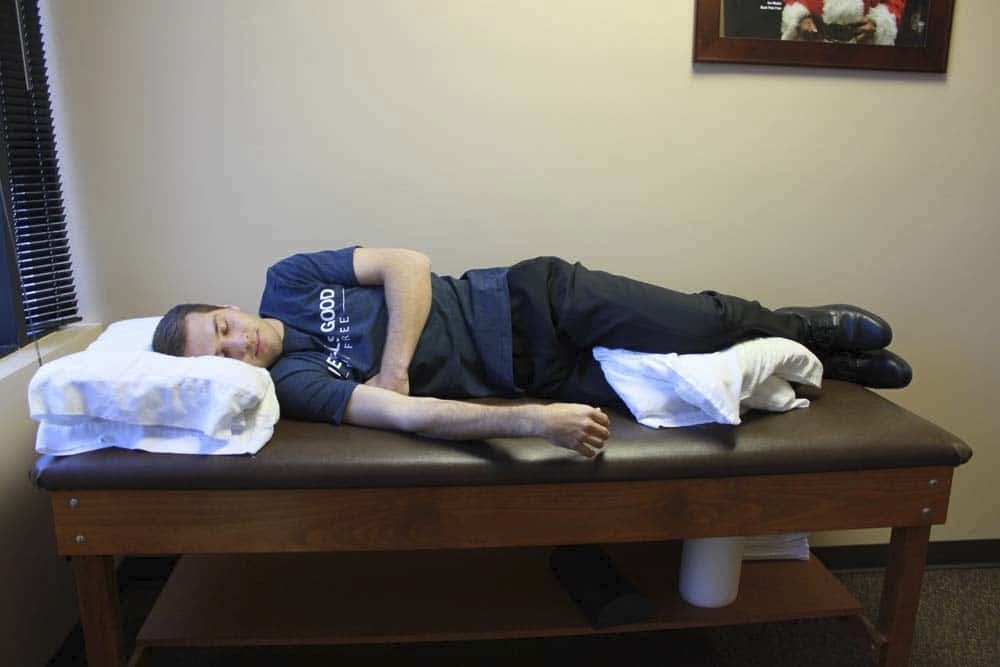
A pillow (1 or 2 depending on the thickness) should support the head and neck so that the spine remains straight in a horizontal position.
The pillow should fill the space between the outside of the shoulder and the ear to prevent the neck from bending at an awkward angle.
Side sleepers may also benefit from sleeping with a pillow between the knees to help improve spinal alignment.
If You Sleep On Your Stomach…
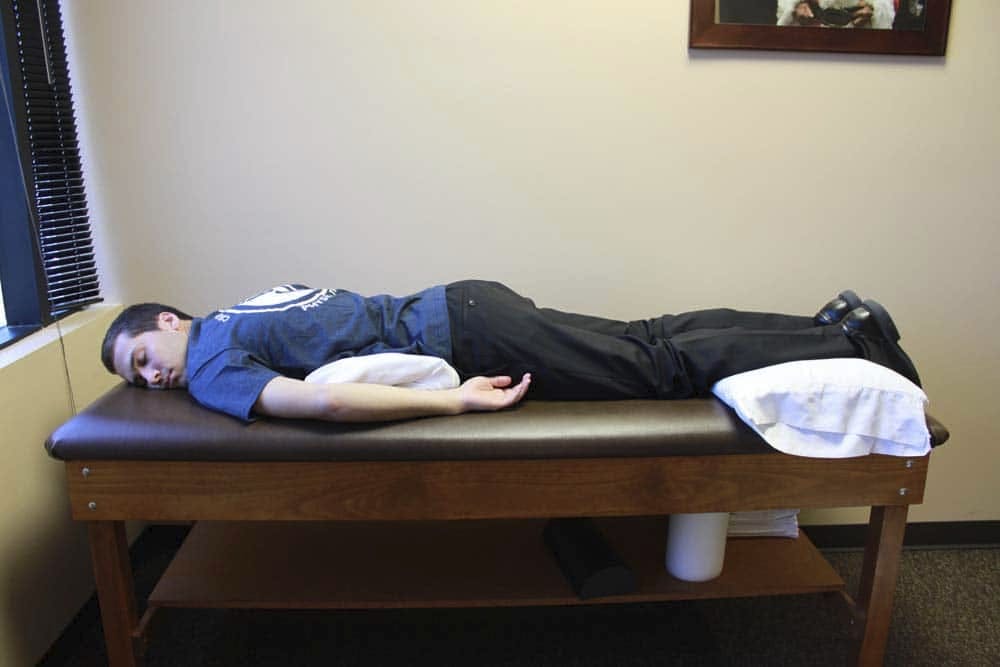
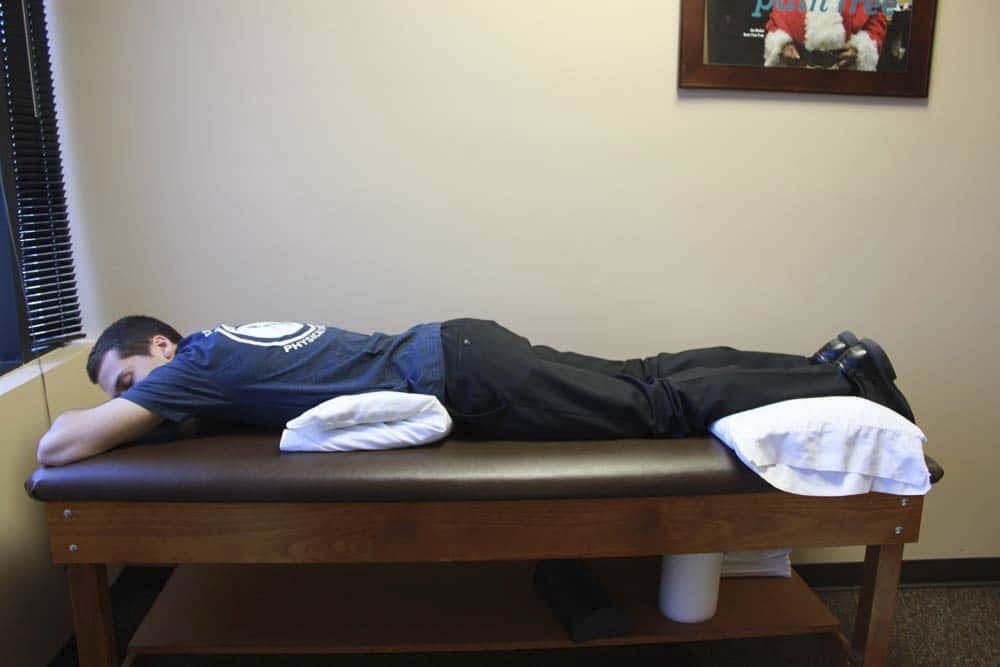
You are more prone to neck and back pain due to the difficulty in maintain the proper spinal position leading to an increase in aches and pain. If possible, avoid sleeping on your stomach.
However, if you wish to sleep on your stomach, avoid using a pillow for head support. Instead, place a pillow under the hips to take stress off of the lower back. You can also use a pillow under the ankles for additional cushioning.

